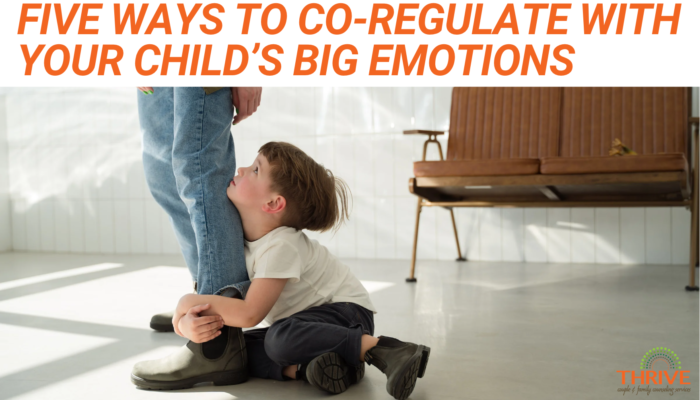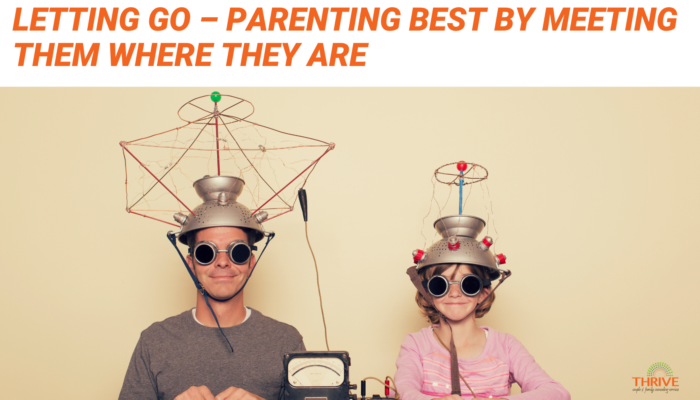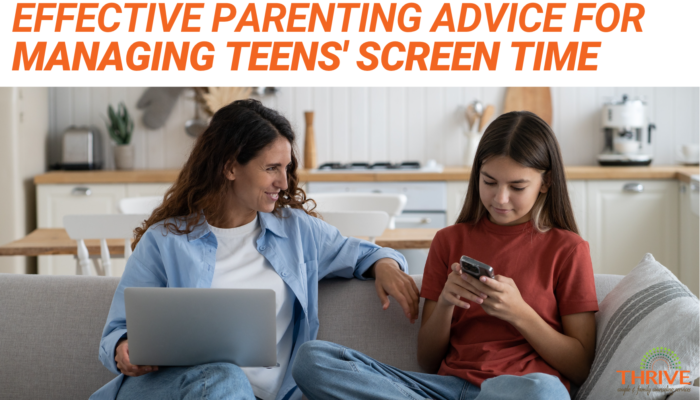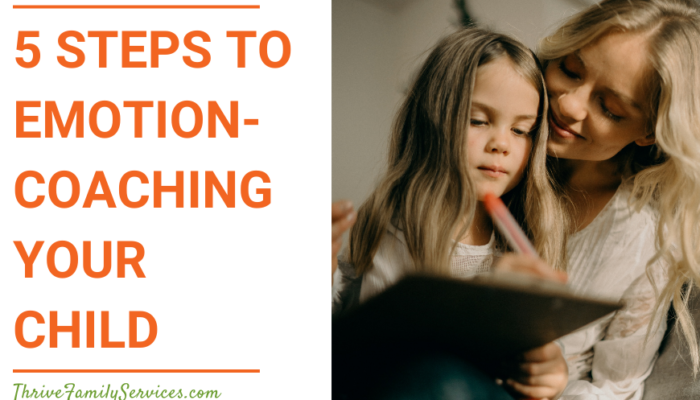5 ways to co-regulate with your child
If you have kids, then you have come across a time or two (or three or four) where their emotions took over and became so big that they triggered our own reaction. This is an incredibly difficult situation because not only are your kids unable to regulate themselves, but you are also struggling with feeling like nothing you can do is helping. For help with how to co-regulate with your child, we have Englewood, CO Parenting Counseling, and you can read on to learn more below!
When you and your child are dealing with big emotions, co-regulation can help. Here are some therapist-approved strategies to help you and your kid co-regulate and connect on a deeper level.
Take a couple of slow deep breaths before engaging further
Taking slow, deep breaths helps to regulate your own nervous system, which is crucial when you’re feeling emotionally activated. One way we can trick our nervous system into regulating (or calming down) faster is by taking a deep breath in and then breathing out through pursed lips like we are breathing through a straw.
This tricks our brain to switch out of an activated nervous system and into a calm and social one. When we can make that switch within ourselves, this will automatically cause a chain reaction within our children and help them calm down when they’re feeling big emotions.
Be aware of your body positioning
When your child is upset and acting out, it is easy to feel like we need to get control of the situation as soon as possible. However, rushing into your child’s space might cause both of your emotions to heighten instead of calming you down. Remaining a few feet apart at first might be the better option when your emotions are heightened, as long as no one is in danger.
Position your body at an angle from your child’s so that your shoulders are not square. Get down to their level and if possible, relax your stance. Lower your shoulders and let your hand rest on the side. This will send signals to their brain that things are safe and calm. This will also help keep your body from entering an escalated emotional state as well.
Verbalize and validate their emotional experience
Children often feel big emotions over something that our adult brains may read as silly or unimportant. This is because we have the benefit of experience and a fully developed prefrontal cortex, which allows us to think in broader strokes and see the bigger picture.
Your child doesn’t have this ability yet. Even a teenager is going to struggle with this as their prefrontal cortex is only just starting to develop at that age.
When someone is emotionally hijacked (triggered), they don’t always have access to the more logical parts of their brain. Emotions are very determined messengers. If we don’t feel like our emotions are understood and validated we cannot move past them.
Verbalize the emotion you are seeing from your child and why they are feeling it
For example, tell your child, “ This feels really overwhelming, I know” or “I know you’re upset that we have to change activities, and that’s okay.”
Responding like this will let them know that you understand their emotions and that it is ok for them to feel that way. We don’t want to invalidate their emotional experience when they are feeling big emotions.
Later, when they have calmed down, you can have a discussion about what happened. They will learn and adjust their reactions naturally. Putting this into practice helps both of your brains to make connections to react appropriately when these emotions come up again instead of being frustrated when you’re overwhelmed.
Do a short calming activity with them
Typically, these big emotions come up at what seems to be the worst possible time. Your own anxiety and emotions might flare up at the thought of taking more time to co-regulate, but I promise that it is unlikely a crisis will occur due to a five-minute break.
Depending on the age of your child, the activity might look different but the purpose is always the same – to deactivate the nervous system stress response and move to a more calm, regulated response.
These activities can help you co-regulate with your child when they’re feeling big emotions:
- Offer your kids favorite type of breathing exercises (butterfly breath, spiderman breath, etc.).
- Ask them to take a short walk with you outside.
- Sit cross legged, use your knees as drums, and ask them to copy your drumming pattern. Then, ask them to make up their own and copy theirs.
- Get some crayons, markers or colored pencils and start drawing, scribbling, or coloring and ask them what colors you should use or what to draw. Have them do it with you.
You might be asking “What if I try these strategies to co-regulate and my child screams NO! at me”?
This is a common response from children, and it means that they are not ready to engage or don’t feel that their emotions have been adequately understood. If this happens, continue to validate their emotional experience while you start engaging in the activity yourself.
Explain while doing this that you need a break and this is how you are going to do it. Often, once the child sees you doing the activity they will want to join you or get interested in it.
Practice co-regulating activities when calm
Since our brain isn’t able to utilize its more logical parts and see the bigger picture when dysregulated, it is important to practice regulation skills while regulated to make sure we can recall them in times of need. Make sure to practice these strategies to co-regulate with your child during times when you’re not feeling heightened emotions.
Encouraging regulation skills even when minor events take place is a good way to keep you and your kids from entering into an emotionally hijacked space in the first place.
How can co-regulating help my child in the future?
Co-regulating with your kids will not only normalize emotions and teach them healthy ways of coping with their experiences, but it will also build a sense of safety and connection between you. These skills will help them build a foundation of secure connection for future relationships.
Securely attached children grow into securely attached adults who are able to effectively regulate and communicate their own emotions with others. We know that connection is vital to human growth and health and cultivating a secure attachment style will lead to more successful relationships.




